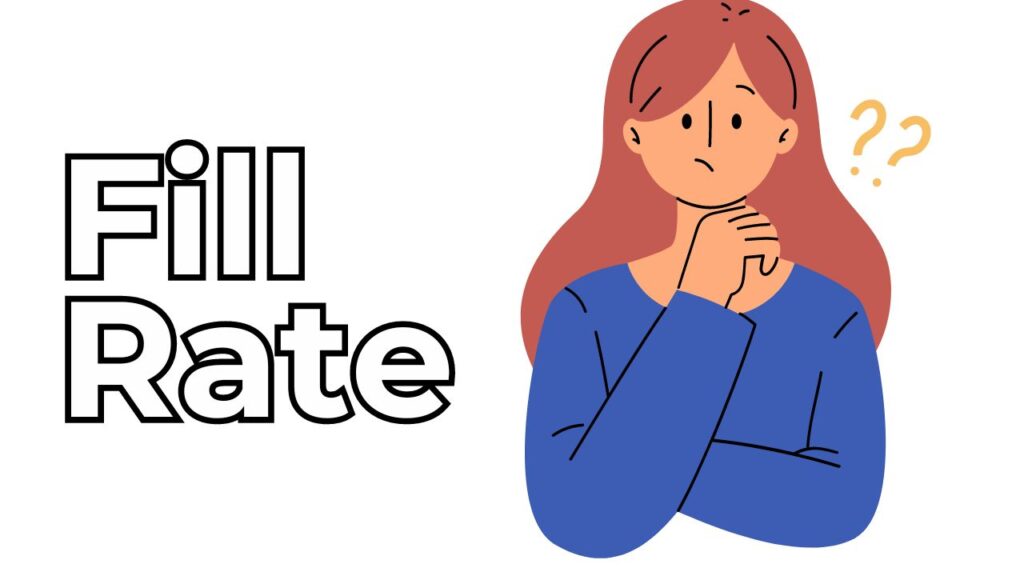Companies in the wholesale and retail sectors measure their fill as a metric to understand the efficiency of their supply chains when it comes to fulfilling customer orders. Through the fill rate, companies can assess the level of customer satisfaction they are holding as it indicates how quickly the customers can expect to receive their placed orders from the business.
If you want to know more about the fill rate metric in the shipment business world, then this article is for you. Hop on below to gain insight into the fill rate definition, how many types it has, and how you can calculate it.

| Table of Content |
Part 1. What is the Fill Rate?
Fill Rate—also known as fulfillment rate—refers to the percentage of orders that can be shipped from the available stock without losing sales, stockouts, or backorders.
The metric is a good reflection of the ability of your business to meet the demands of its consumers. It helps assess the overall effectiveness of the e-commerce business operations.
When the fulfillment rate is high, it means that the business operations are streamlined, the company has effective inventory management, and many satisfied customers. However, a lower rate means that changes need to be made to make the operations and delivery smoother.
Part 2. How to Calculate Fill Rate?
With the fill rate definition out of the way, the next question that might pop into your head is probably how you can calculate the fill rate of any business, right? Well, if that is the case, then let us tell you that the formula for fill rate is pretty straightforward, and all you have to do is divide the number of orders that the company shipped by the total number of orders that were placed and then multiply it by 100. The mathematical equation for this is:
Fill Rate = (Total number of orders shipped/Total number of orders placed) x 100

Businesses can calculate the fill rate by counting the number of orders that the company was able to fulfill at one time. Once done, they can then divide that number by the total number of orders they had received during that duration and then multiply the value by 100. So, for example, if a business has received 60 orders but they were only able to ship and deliver 45 out of those placed orders, the calculation for the fill rate would be as follows:
Fill Rate = (45/60) x 100 = 75%
Hence, the fulfillment rate for the business in this case scenario is 75%. While we understand that knowing the fill rate to streamline business operations is essential, sometimes small businesses are hesitant to calculate it on their own. If you find yourself in such a situation, you can always use exceptional analytics and fill rate calculation tools, which you can find online.
Part 3. Types of Fill Rate
While many people would think that the fill rate is one full-term or calculation method, this is certainly not the case. In fact, this particular metric has five subtypes, and while many companies use the order fill rate to calculate their measures, knowing about the others is essential. This is because these types can also provide valuable insight into a company’s efficiency.
1. Order Fill Rate
One of the most common fill rates to track is the order fill rate, which provides businesses with accurate information on how efficiently a company’s operations are meeting consumer demand. When the order fill rate of a company is high, it signifies that the company is putting out orders quickly and efficiently, indicating that it has smooth operations.
2. Line Fill Rate
When a customer places an order, the company records the sale on the order bill as line items. So, the line fill rate is basically the percentage of the order lines a company fills out on the bill based on the total number of order lines placed.
3. Case Fill Rate
The case fill rate is used mainly by distributors and wholesalers and is the percentage of the product cases that a company has initially shipped out of all the product cases for which the company received orders.
4. Warehouse Fill Rate
The fill rate is the exact measurement of the order fill rate. In this, the supply chain managers calculate the percentage of the orders that they fulfilled and shipped from the company warehouse out of all the orders that were placed.
5. Vendor Fill Rate
This fill rate is mainly used in wholesale and distribution. Companies that make purchases from vendors often use this fill rate. Through this fill rate, the company can then measure the percentage of vendors who completed the order shipments out of the total vendors from which the company received its orders.
Part 4. Why Is Fill Rate Important?

There are several reasons as to why calculating the fill rate is essential. However, a few of the main ones are:
Customer Satisfaction
The higher the fill rate of a company, the better their customers will be satisfied with the quick and prompt completion and delivery of their orders. This hence would help a company asses and contribute to a positive customer experience.
Increased Sales
With a high fill rate metric and improved customer satisfaction, customers would likely place an order with your company again. Chances are that you would recommend your services and products to others as well. Hence, all this will lead to increased sales.
Competitive Advantage
With a better fill rate, any company can achieve a better competitive advantage in the market. Customers remain loyal and favor businesses that consistently fulfill orders without issues and promptly, enabling businesses to achieve better sales in a saturated market.
Better Inventory Management
By tracking a company’s fill rate, one can accurately forecast demand and optimize product inventory levels. This would help prevent stockouts and prevent excess inventory from accumulating.
Part 5. What is a Healthy Fill Rate?
A healthy fill rate is as close to 100% as possible. This Rate would help indicate that the business or company is fulfilling the orders that were placed efficiently without encountering any stockouts or backlogs. However, while achieving a complete 100% every time is impossible, on average, companies can maintain a fill rate of 85-95%. The most healthy fill rate a company should strive for is between 97-99%.
Conclusion
If you are someone who wants to gain a deep insight into fill rate and how it is calculated, then we hope this article was helpful for you. Through this, you might have understood the importance of choosing a shipping company with a better fill rate, and if you believe you’d like to find and select one for yourself now, then hear us out. There is no better company than NextSmartShip when it comes to fulfilling orders. The company has been in operation for years now and understands prompt delivery is one aspect that is very important for customers; hence, it ensures that any orders placed are received in effecient time. If you are a business that wants to choose a shipping company, then check out NextSmartShip for sure.



